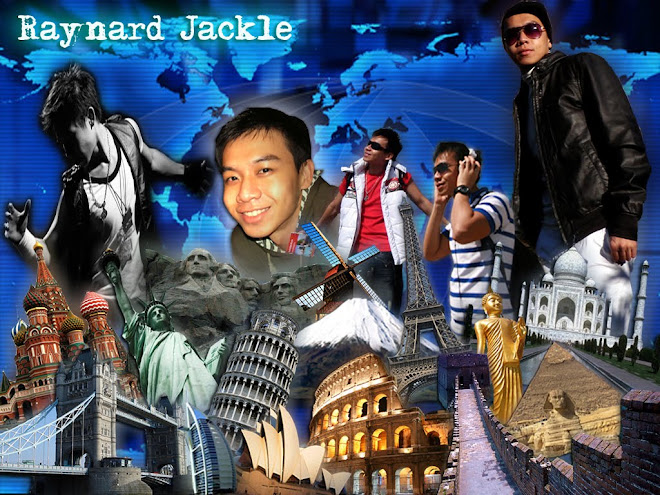Flight No: CX135/CX168 (HKG-MEL-HKG)
Date : 23rd - 25th May 2009
Flying Hours: 9 hours 5 mins
(GMT +1000 Winter)
Melbourne, or locally is the capital and largest city of the State of Victoria, and the second most populous city in Australia. The Melbourne city centre is the anchor of the larger geographic region and statistical division known as the Greater Melbourne metropolitan area—of which Melbourne is the common name. In 2008, it had a population of approximately 3.9 million. Melbourne was named after the 2nd Viscount Melbourne, William Lamb in 1837; the Prime Minister of the United Kingdom during the reigns of both King William IV and Queen Victoria. It is located on the lower reaches of the Yarra River and on the northern and eastern shorelines of Port Phillip, extending into their hinterland. It was established in 1835 (47 years after the first European settlement of Australia), by free settlers from Van Diemen’s Land, as a pastoral township around the estuary of the Yarra River. Melbourne was declared a city by Queen Victoria in 1847, and became the capital of Victoria when the district was declared a separate colony from New South Wales in 1851. When gold was discovered in the district during the 1850s (which sparked the Victorian gold rush) Melbourne was transformed into a wealthy metropolis, and one of the largest and richest cities in the world, by the 1880s. Upon the Federation of Australia in 1901, Melbourne served as the seat of government of the newly founded Commonwealth of Australia till 1927 while the new nation's capital of Canberra was being built. Melbourne is a centre for arts, commerce, education, industry, sports and tourism. Since 2002, it has been consistently ranked in the top three 'World's Most Livable Cities' by The Economist. In 2008, it was also recognised as a beta world city+ in the World Cities Study Group’s inventory by Loughborough University. The city is notable for its distinct blend of Victorian and contemporary architecture, expansive parks and gardens and multicultural society. It is also home to the World’s largest tram network. It is recognised as Australia's 'cultural and sporting capital' and is home to some of the nation’s most significant cultural and sporting institutions. In 2007, it was also ranked in the top five university cities in the Global University Cities Index by RMIT, and was classified as a City of Literature by UNESCO in 2008. Melbourne has also played host to a number of significant international and national events, including: the Parliament of Australia's first sitting in 1901, 1956 Summer Olympics, Commonwealth Heads of Government Meeting in 1981, World Economic Forum in 2000, 2006 Commonwealth Games and G20 Summit in the same year.
Date : 23rd - 25th May 2009
Flying Hours: 9 hours 5 mins
(GMT +1000 Winter)
Melbourne, or locally is the capital and largest city of the State of Victoria, and the second most populous city in Australia. The Melbourne city centre is the anchor of the larger geographic region and statistical division known as the Greater Melbourne metropolitan area—of which Melbourne is the common name. In 2008, it had a population of approximately 3.9 million. Melbourne was named after the 2nd Viscount Melbourne, William Lamb in 1837; the Prime Minister of the United Kingdom during the reigns of both King William IV and Queen Victoria. It is located on the lower reaches of the Yarra River and on the northern and eastern shorelines of Port Phillip, extending into their hinterland. It was established in 1835 (47 years after the first European settlement of Australia), by free settlers from Van Diemen’s Land, as a pastoral township around the estuary of the Yarra River. Melbourne was declared a city by Queen Victoria in 1847, and became the capital of Victoria when the district was declared a separate colony from New South Wales in 1851. When gold was discovered in the district during the 1850s (which sparked the Victorian gold rush) Melbourne was transformed into a wealthy metropolis, and one of the largest and richest cities in the world, by the 1880s. Upon the Federation of Australia in 1901, Melbourne served as the seat of government of the newly founded Commonwealth of Australia till 1927 while the new nation's capital of Canberra was being built. Melbourne is a centre for arts, commerce, education, industry, sports and tourism. Since 2002, it has been consistently ranked in the top three 'World's Most Livable Cities' by The Economist. In 2008, it was also recognised as a beta world city+ in the World Cities Study Group’s inventory by Loughborough University. The city is notable for its distinct blend of Victorian and contemporary architecture, expansive parks and gardens and multicultural society. It is also home to the World’s largest tram network. It is recognised as Australia's 'cultural and sporting capital' and is home to some of the nation’s most significant cultural and sporting institutions. In 2007, it was also ranked in the top five university cities in the Global University Cities Index by RMIT, and was classified as a City of Literature by UNESCO in 2008. Melbourne has also played host to a number of significant international and national events, including: the Parliament of Australia's first sitting in 1901, 1956 Summer Olympics, Commonwealth Heads of Government Meeting in 1981, World Economic Forum in 2000, 2006 Commonwealth Games and G20 Summit in the same year.



the train station







famous Vietnamese Beef Noodle

MAX BRENNER - A must-go cafe + chocolate house if you ever visit Melbourne, as you'll never regret




enjoying my cappuccino





with all the nice crews -
Raynard (MY), Noelle (HK), Yolanda (CN) & James (HK)






you can queue for a 10-mins FREE internet surfing
 shots being taken from my room
shots being taken from my room










